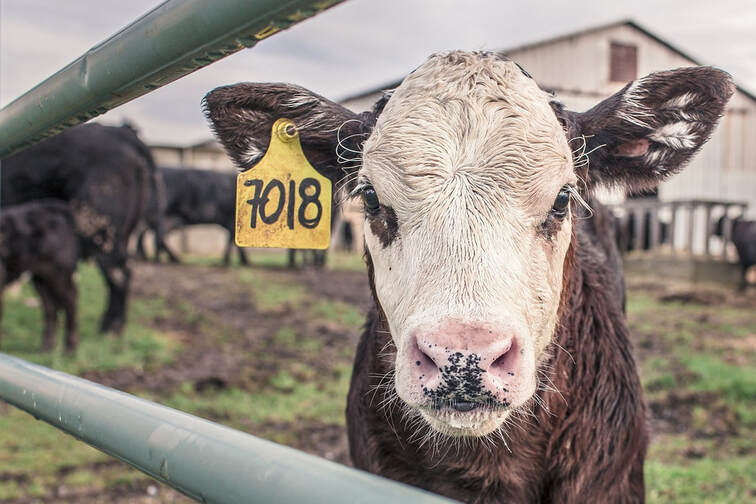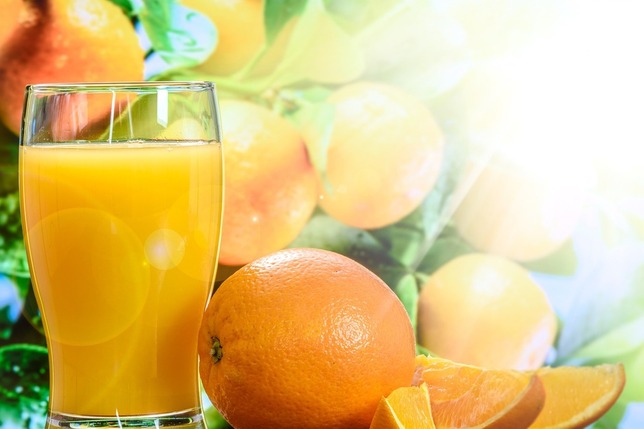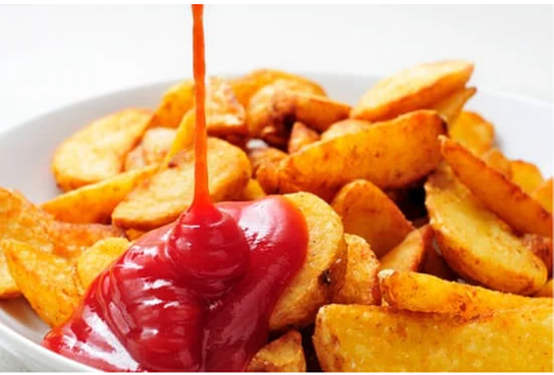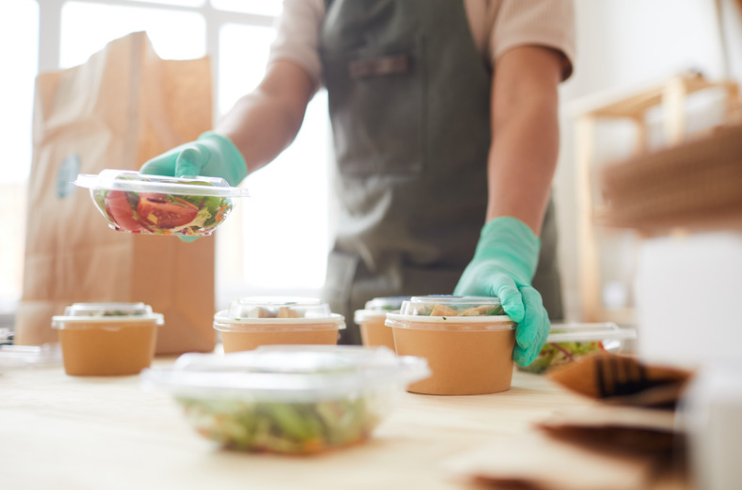|
0 Comments
The price of your favorite breakfast beverage doesn’t seem to be falling anytime soon.
Click here to read the full article. The largest producer of fresh eggs in the U.S. said Tuesday it had temporarily halted production at a Texas plant after bird flu was found in chickens, and officials said the virus had also been detected at a poultry facility in Michigan. Click here to read the full story.
Not many ranchers active today will remember the last time the U.S. cattle industry was this small. On January 1, 2024, the All Cattle and Calves inventory was 87.15 million head, the smallest total inventory since 1951. The All Cattle and Calves inventory is 1.9% smaller year over year and is the fifth consecutive year of declining cattle inventories, a total decrease of 7.65 million head or 8.1% since the most recent peak in 2019. The 2023 calf crop was 33.6 million head, down 2.5% year over year and the smallest calf crop since 2014.
Click here to read the full article. Last year, an unusually low orange yield in Florida drove the costs of orange juice to record-breaking highs — and there are fears those trends could continue, but the U.S. Department of Agriculture is optimistic for a rebound in 2024.
Click here to read the full article. From flattop to waffle iron to panini press, our Pillsbury freezer-to-oven Cinnamon Rolls get the griddle treatment and transform into crowd-pleasing menu items across all dayparts.
Click here for more. Dairy suppliers and others cite Pactiv Evergreen as the source of the supply problem. Tetra Pak and other competitors are boosting production to meet increased demand. Click here to read the full article.
Pillsbury croissants are the sandwich hero in this recipe collection. Buttery, flakey layers plus-up the yum factor and work with so many flavor combinations. Click here for recipes from General Mills.
General Mills tapped into nostalgia to revamp three classic desserts and give them new life on modern menus. From pastry tarts to stacked Napoleons to torched Baked Alaska, there’s something for everyone’s dessert desire! Get your holiday menu offerings ready with inspiration from Chefs of the Mills.
Click here to find recipes. The HEINZ United States of Saucemerica program plans to utilize our iconic HEINZ sachets and turn them into state-related collectible tokens! 50 new designs, similar to the below, will be rolling out across Ketchup, Mustard, Mayo, Tartar, BBQ, and Ranch from June – August 2023, roughly. Each case of product will host anywhere from 1 to 4 different states at a time, and over the summer, the state assortments will change twice – roughly once per month. This approach of assortment release will encourage continued consumer engagement.
The HEINZ United States of Saucemerica promotion incentivizes consumers to collect as many packets as possible, throughout the summer, for a chance to win a cash prize – but that’s not all, operators who purchase any of these impacted SKUs will also have a chance to win! More details to come on operator & consumer contest and prizing Following the close of the campaign in August, packaging graphics will begin to return to their normal, current designs, though Saucemerica product will still be valid even after the contest close. All impacted SKUs are listed on the pages following. Please reach out to your Kraft Heinz Away From Home representative with any questions. Affected IFD Items: #58340 - HNZ YELLOW MUSTARD SS500 .2OZ #58300 - HNZ YELLOW MUSTARD SS200 .2OZ #58660 - HEINZ TARTAR SAUCE SS200 12GM #107249 - 9G HNZ KET SMPHNZ SS 1000 #58220 - HEINZ KETCHUP SINGLE SERVE 1000 9GM #58180 - HEINZ KETCHUP SINGLE SERVE 500 9GM #105019 - HNZ BARBECUE SAUCE SS200 12GM #105569 - HNZ REAL MAYONNAISE SS500 12GM S/O #58700 - HNZ REAL MAYONNAISE SS200 12GM Orange juice futures are hitting record highs. Here’s why, and what it means for consumers8/14/2023 Orange juice futures are hitting record highs because of bad weather and a nasty citrus disease. That could mean higher prices at the grocery store. In recent weeks, prices in the OJ futures market have topped $3 per pound. Around this time last year, prices were hovering at around $1.81 per pound. The price increase has been fueled primarily by short citrus supply around the globe.
Click here to read more. Mayonnaise forms the foundation for numerous delightful sauces. From tangy tartar sauce to lemony aioli to spicy Sriracha mayo, it can be easily customized to suit your taste preferences. The thick condiment welcomes all, effortlessly enhancing the flavor profiles of burgers, grilled meats, and especially seafood dishes.
Click here to read the Summer Edition of Kraft Heinz Taste Trends. FLAKY, GOLDEN PERFECTION IN A FRACTION OF THE TIME
There’s no thawing. No proofing. No preparation stress. Just delicious, flaky, fresh Pillsbury croissants every single time. Croissants are delicious on their own, but they’re also the perfect canvas for culinary creativity! Get started with a free recipe book filled with 12 irresistible recipes your customers will love — from Orange Almond Croissant Sticky Buns to Steak Frites Croissants with Blue Cheese Crumbles. Check out General Mills Croissant Recipe Book! Kraft Heinz Taste & Trends - July 2023 The first thing that comes to mind when people hear the word HEINZ is ketchup. No surprise there. These days global flavor trends and people’s hunger for new and unique experiences has given rise to some new and innovative sauce combinations made by HEINZ.
Click here to read the full article. Irked by California’s Proposition 12, seven farm-state senators announced legislation on Thursday to prohibit states from regulating agricultural production in other states. Virtually anyone — producer, distributor, trade group, transporter, consumer, and laborer were named in the bill — would be empowered to challenge such regulatory infringement in court and seek financial compensation.
Click here to read the article. Food delivery companies seem to work in the same way — a customer places an order, their rider goes to pick it up and deliver it. But there’s much more.
Click here to read the full article. Food safety inspections are a normal part of doing business in the restaurant industry. Their purpose is simple: to help you protect your customers from getting sick. In truth, food safety inspectors are your partners. They’re there not to make your life difficult or to close your business down, but rather to help you keep your doors open and your customers safe from foodborne illness.
Click here to read the full article. In 2020, at the onset of the COVID-19 pandemic, the leisure and hospitality industry in the United States suffered more job losses than any other sector. The majority of layoffs were in foodservice, with around 5.5 million chefs, waiters, and cashiers forced out of their jobs.
As restaurants continue to recover, the main focus is on attracting customers while keeping costs down. However, the widespread labor shortage in the United States is making it difficult for foodservice companies to thrive and meet all-important revenue targets. The shortage is having a significant impact from small towns to major foodie cities including Orlando, New Orleans, and San Francisco. Click here to read the full article. April EditionShareable or “tapas-style” dining is my favorite way to experience a meal with friends and family. Tapas are small plates of food typically served as appetizers in Spanish restaurants. It’s a popular way to eat in Spain, where people often share small dishes with friends over a glass of wine or beer. Whether you call them shareables or tapas, they’re a great way to taste different flavors at the same table!
Click here for the full article. Cold storage and logistics company Americold reportedly has been dealing with IT issues since a network breach last week.
The company contained what may have been a ransomware attack and is investigating the incident, which, based on customer and employee reports, has affected operations, according to the story on a popular information security and technology site, BleepingComputer.com. Americold has not issued an official statement about the incident. Neither did the company provide details in a memo reportedly sent to customers. Americold did tell customers that it expects its systems to remain out of operation until mid-week this week, the report said. "In the meantime, it is requested that you cancel any inbounds out past" this week. "Outbounds will continue to be very limited in manual capabilities, so we would like to request that any non-critical outbounds be pushed out and rescheduled with your site SR at a later date," BleepingComputer quoted the memo as saying. "Critical outbounds should include product that have potential to reach an expiration date." "As we continue to work to understand the level at which data will be recovered, we will be able adjust our anticipated timeline for restart and will provide updates accordingly," the memo reportedly said The company did not immediately respond to request for comment. Americold has locations across the world and provides temperature-controlled storage all along the animal protein supply chain. USDA’s Animal Health and Inspection Service (APHIS) confirmed the first outbreak of highly pathogenic avian influenza (HPAI) in the state of Illinois involving commercial turkeys.
The infections in Wayne County affected 18,200 turkeys and represented the first confirmed HPAI outbreaks in Illinois since Dec. 21 and bring the number of commercial and wild birds affected by HPAI to approximately 27,210 since March of last year. Meanwhile, a total of 111,300 birds in Pennsylvania tested positive for HPAI in the last week, including 97,700 commercial broilers in Lancaster County, APHIS reported. The agency’s totals include 9,400 birds in Pennsylvania confirmed with HPAI since Feb. 23. It’s never been easy to operate a restaurant, and in recent years it’s been even harder.
In 2020, Covid restrictions ground the nation’s bustling restaurant industry to a halt. Since then, there have been significant signs of a rebound: Dining rooms have reopened and customers have returned to cafes, fine-dining establishments and fast food joints. But there are fewer US restaurants today than in 2019. It’s not clear when —if ever — they’re coming back. Click here to read the full article. The worst-ever outbreak of highly pathogenic avian influenza continued, with the virus affecting flocks in the U.S. and abroad.
United States On Feb. 21, the USDA's Animal and Plant Health Inspection Service announced an HPAI outbreak in a commercial broiler production flock in Lancaster County, Pa. The USDA stated that 97,700 birds were affected, and the outbreak is still considered active. That is the third commercial broiler outbreak so far in 2023. On Jan. 20, a detection in Weakley County, Tenn. affected 267,800 birds, and a Feb. 7 outbreak in Leake County, Miss. affected 89,800 birds. Canada Like the U.S., Canada is also grappling with historic HPAI outbreaks. According to the Canadian Food Inspection Agency, approximately 7.2 million domestic birds in Canada have been affected in the last year, with 3.7 million cullings in British Columbia alone. The Globe and Mail notes that more than $82 million has been paid, to date, as compensation for cullings. South America, Caribbean cases HPAI was recently declared "endemic" by world health experts, and the virus has continued its spread to other countries. In the last week, both Argentina and Uruguay confirmed their first cases among wild birds, according to Poultry World. Currently, Brazil, Guyana, and Suriname are the only South American countries without detections. Argentina’s secretary of Agriculture, Livestock and Fisheries, Juan José Bahillo, blamed migratory birds for the country's detection; the secretary called an emergency meeting to address matters. Additionally, WATT cited WOAH reports that three birds at Cuba's Jardín Zoológico de La Habana zoo in Havana died from HPAI. The detection resulted in the culling of 82 birds in the zoo's area. The price for a restaurant meal continued to increase at a rate faster than overall inflation in January, according to federal data released on Tuesday, as operators kept increasing their charges to offset narrowing profit margins.
Food-away-from-home prices increased 0.6% in January, according to the U.S. Bureau of Labor Statistics. Over the past year, those prices are up 8.2%. Click here to read the full article. |
AuthorWrite something about yourself. No need to be fancy, just an overview. Archives
June 2026
Categories
All
|













 RSS Feed
RSS Feed